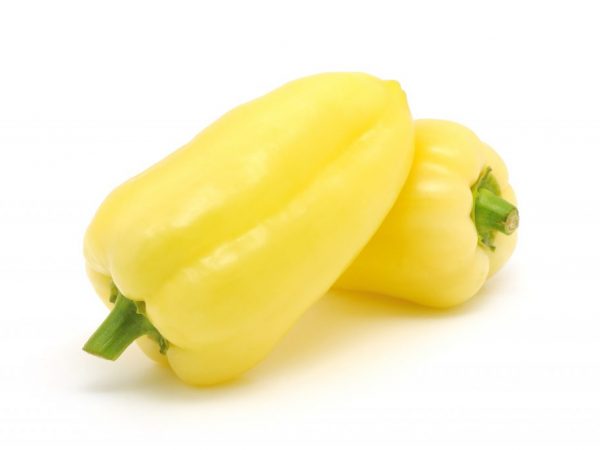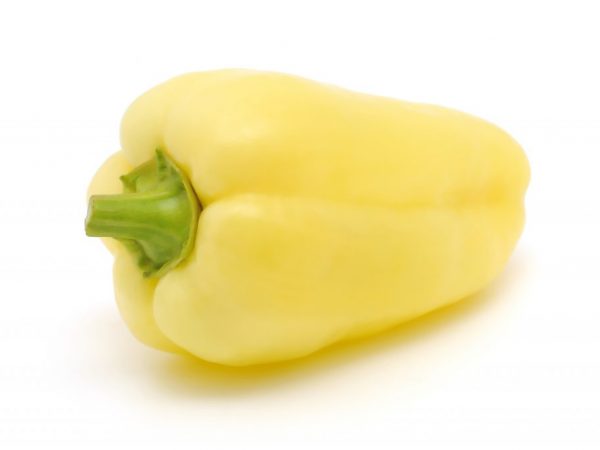Description of Madonna pepper
Sweet pepper is a vegetable crop especially popular among gardeners. The role in the choice of the variety is played not only by the presentation and taste, but also by the yield indicators. That is why many people prefer such hybrid varieties as Madonna peppers of the f1 category.

Description of Madonna pepper
Characteristics of the variety
Pepper Madonna is an f1 category hybrid. It was launched in 2007 in France.
In 2008, this variety received official permission to be entered into the State Register of the Russian Federation. According to the description, the species is suitable for cultivation in the northern part of the country and in the Caucasus.
Bulgarian Pepper Madonna of the f1 category belongs to the early cultures. From the moment the first shoots appear to technical maturity, it takes about 60 days. On the 40th day after the formation of the ovaries, biological ripeness occurs.
Description of the bush
The main stem and root system are powerful. According to the description, the height of the bush in open field conditions is about 70 cm.If you grow the crop in a greenhouse, the height of the bush can reach 100 cm.
There is a small distance between the nodes. The foliage covers the bush abundantly, which significantly reduces the risk of the plant getting sunburn. Leaves are medium in size, dark green in color.
Description of the fetus
Pepper Madonna f1 is heart-shaped. The end of the fruit is slightly elongated. During the period of technical ripeness, the pepper is of a delicate beige hue, and during the biological period it acquires a rich red color.
The wall thickness of Madonna pepper is 0.7 cm. The length of the fruit is about 14 cm, and the width is 6 cm. The weight of the ripe fruit is 250 g. Yield indicators are 350 kg per hectare. Fruits contain many useful substances:
- the amount of sugar is 8% per 100 g;
- vitamins of group C - 4% per 100 g;
- B vitamins - 7% per 100 g;
- carotene - 86 mg per 100 g.
The taste is rich, sweet. There is no bitterness or acid in the fruit. The variety is versatile in use.
Growing seedlings
The main feature of Madonna hybrid pepper is that the seeds do not need to be disinfected or treated with growth stimulants. The company supplying seeds to the market carries out all the preparatory measures in advance.
The germination time of seeds varies significantly, depending on the temperature. So, if the temperature of the soil in the containers is 15-17 ° C, then after 20 days the first shoots will appear. With a soil temperature of 27 ° C, seedlings appear in the second week after planting the seeds. Experts recommend planting seeds in separate containers because:
- this promotes rapid growth and proper stem formation;
- transplanting seedlings will be easier, because in this case it is difficult to disrupt the root system, the depth of planting the seeds should be about 2 cm.
In order for the seedlings to sprout faster, regulate the room temperature. At night, it should be 20-22 ° С, and during the daytime - 25 ° С. A deviation of 3 ° C slows growth by about 2 days. Lighting time should be 12 hours. If natural light is not enough, you need to use special lamps.
On the 55th day after planting the seeds, 6 pairs of leaves and the first buds should form on the plant. The central bud must be removed, because it inhibits the formation of others.
Planting

We plant in warm soil
Planting Madonna pepper is carried out only after the seedlings reach an age of 60 days. The soil for planting is heated to a temperature of 15 ° C.
In a greenhouse, planting is carried out according to the following scheme: the distance between the rows is 50-70 cm, between the bushes - 45 cm. In open ground, 1 sq. m plant no more than 3 plants.
Care
Pepper Madonna f1 needs quality care. First of all, lighted places are chosen for planting, because this culture requires constant light. Watering is carried out only with warm water (temperature - 25-30 ° C). Experts recommend using only drip irrigation systems. At the time of the growth of the bush, the soil moisture should be 80%. During the period of fruit formation, it is increased to 90%.
Mulching is carried out immediately after planting the seedlings. This allows moisture to remain in the soil and prevents crusting on the surface of the ground. Mulch also reduces weed growth.
Since the fruits are characterized by a rather large weight, the bushes are tied up so that they do not break. It is also important to remember about the formation of the bush. It is best to leave no more than 2 trunks: this will allow the fruit to grow better.
The first feeding is carried out one week after planting the seedlings. Just at this moment, she is able to take root in the ground. The following dressings are carried out at intervals of 14 days. Preference is given to minerals (phosphorus, potassium and iron) with a high content of micro and macro elements. All fertilizers are diluted with warm water according to the instructions on the package and at least 1 liter is poured under each plant.
Diseases and pests
Sweet pepper Madonna has an excellent immune system. It is not susceptible to diseases such as powdery mildew, tobacco mosaic or anthracnose, but it can be affected by top rot. To eliminate it, it is recommended to feed with potassium nitrate.
When the first signs of aphids appear, the bush is sprayed with medicinal preparations (Araks, Oksikhom or Confidor). In the fight against spider mites, a solution of garlic or wood ash is used. Spraying is carried out once a week until the complete destruction of parasites. They get rid of the Colorado potato beetle by spraying with insecticidal preparations Confidor or Regent.
Conclusion
The main advantages of Madonna pepper are high yield rates and unpretentious care, so even beginners in the field of agriculture can grow it. If you follow all the rules of cultivation, you can harvest a high quality crop.


